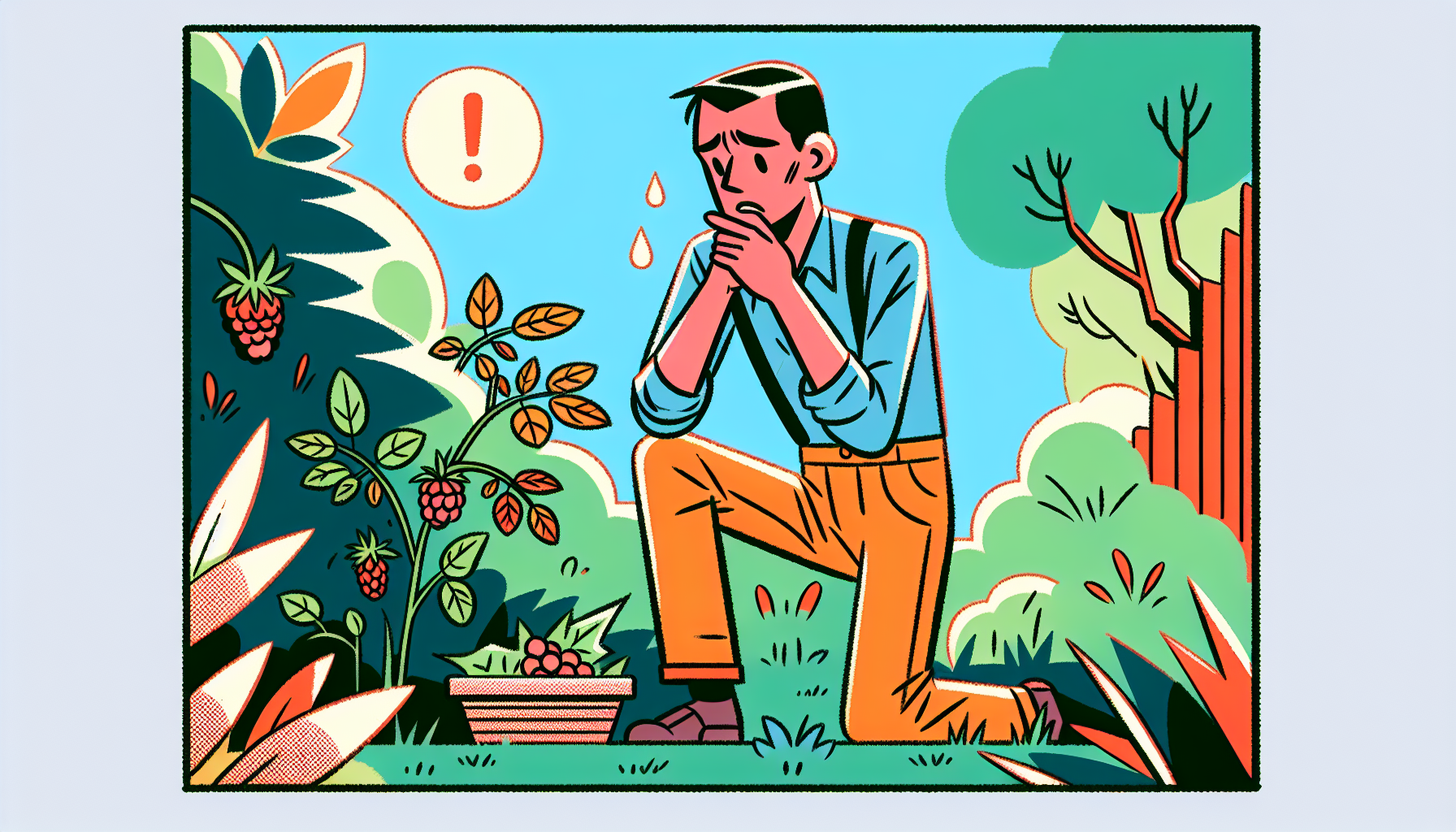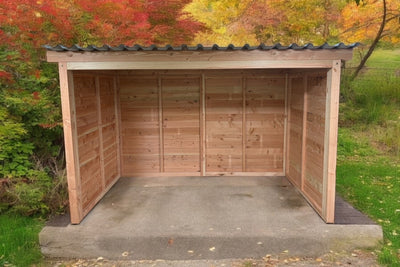Non-toxic berry bushes for child-friendly gardens in Switzerland
Anyone who tends a family garden in Switzerland often asks themselves the question: Which berry bushes are not only productive and pretty, but also safe for children? Caution is required with berries in particular - many wild species appear harmless but are poisonous. For parents or grandparents with children or grandchildren, it is therefore important to choose plants carefully. Fortunately, there are numerous non-toxic berry varieties that are easy to cultivate, robust and can be given to young explorers without hesitation. In this article, you will find out which varieties are suitable, how to plant them correctly and what families with children should pay particular attention to in Swiss gardens.
Which berry bushes are suitable for child-friendly gardens in Switzerland?

Non-toxic berry bushes for family gardens
In Swiss family gardens, berry bushes that are edible and absolutely safe for children are particularly in demand. Plants should be safe and ideally have snack garden qualities, especially if children are free to roam the garden.
- Raspberries: Well-known garden classics whose shoots and fruit are non-toxic. Autumn raspberries provide multiple yields and are particularly beginner-friendly.
- Blackberries: Safe to enjoy. Thorn-free varieties such as 'Navaho' are ideal for gardens with children.
- Blueberries (cultivated blueberries): Contain lots of antioxidants, are mild in flavor and require an acidic soil.
- Currants (red, black, white): Robust, child-friendly shrubs with a high vitamin C content. Also suitable for smaller gardens or balcony boxes.
- Gooseberries: Edible and popular, despite their thorns. Should be enjoyed with caution by small children.
- Jostaberries: An interesting cross between currants and gooseberries. Hardy, rich-bearing and non-toxic.
Poisonous plants such as yew, monkshood, deadly nightshade or privet should be consistently removed from the family garden. They pose serious risks if accidentally eaten.
Selection criteria for safe berry bushes
In addition to non-toxicity, other factors play a role in choosing the right shrub for the family garden:
- Height of growth: Medium-sized shrubs are easy to care for and can be reached by children.
- Thorn-free: Use thorn-free varieties where possible to avoid injuries.
- Robustness: Weather-resistant varieties save plant protection products and effort.
- Ripening time: Staggered varieties ensure longer berry enjoyment over the summer.
- Care requirements: Easy-care varieties that do not require regular pruning or fertilization are ideal.
Tip: In Swiss garden centers (e.g. Landi, Meier Gartenpflanzen or Coop Bau+Hobby) you will often find information on child safety directly on the labels or online in the product range.
How do I find the ideal location for berry bushes?
Site conditions in Swiss gardens
Site conditions vary depending on the region - whether Central Switzerland, Ticino or the Jura. Nevertheless, general guidelines can be applied for successful site selection:
- Light: At least 5 hours of sun per day are ideal for raspberries, blueberries and currants. Blackberries also thrive in partial shade.
- Soil: Loose, nutrient-rich soil without waterlogging is preferred. Blueberries need acidic soil (pH 4.5-5.5), which can be achieved with rhododendron soil or acidic mulch.
- Wind protection: House walls or hedges offer protection from stormy weather and prevent branches from breaking off or young plants from drying out.
Avoid planting directly next to evergreen hedges such as thuja or cherry laurel, as these continuously draw water and nutrients from the soil.
Spacing and space requirements
A common mistake in family gardens is planting too densely. This promotes diseases such as mildew and makes harvesting more difficult - especially for children.
- Raspberries: 40-50 cm spacing within the row, about 1.5 m row spacing.
- Currants and jostaberries: 1.2-1.5 m apart.
- Gooseberries: about 1-1.2 m apart.
- Blueberries in tubs: pots with a diameter of at least 40 cm, plan to repot regularly.
Use tread plates between the rows to create sure-footed paths - practical and childproof at the same time.
How do I make the family garden safe when growing berry bushes?
Typical garden risks for children
Even though berry bushes are non-toxic, there are potential dangers in the garden that you should be aware of:
- Free access: children should never play unsupervised in areas with poisonous plants or water.
- Fertilizers and pesticides: Only use organic products, ideally with FiBL certification (e.g. farmyard manure or organic garden-approved products).
- Thorns: Gooseberries or older blackberry varieties in particular need a child-safe location or supervision during harvesting.
- Wild berries: Sensitize children to harvest only from known, labeled plants.
Ideas for a child-safe garden structure
With targeted measures, even the snack garden can become a safe learning space for young hobby gardeners:
- Fall protection along the path: bark mulch or wood chips cushion paths near beds.
- Child-friendly raised beds: Low heights are ideal for first-time gardeners and provide clear boundaries.
- Small fences: Protect young berry bushes from animals and wild play.
- Colorful plant signs: Simple pictures and colors help children recognize where they are allowed to snack.
By the way: Some municipalities such as Zurich or Bern provide gardening tips especially for families - information can be found at bafu.admin.ch.
How do I care for berry bushes sustainably and successfully?
Pruning and fertilizing in the garden year
Sustainable garden care means minimal intervention and maximum yield. The right pruning has a significant influence on growth vigor and fruit quality:
- Raspberries: Prune summer raspberries to ground level after harvesting. Cut back fall raspberries completely to zero in late winter.
- Blackberries: Guide new canes, thin out yielding parts in spring. Thorn-free varieties make this work easier.
- Currants: Remove older, thick shoots annually to make room for younger fruiting wood.
- Fertilization: Feed the soil with compost or organic berry fertilizer. Products from Hauert or BioTrissol are particularly suitable for Swiss gardens.
Mulch layers of grass clippings or leaves to keep the soil moist, improve the structure and suppress weeds in the long term.
Prevention of diseases and pests
A good choice of location and regular checks prevent many problems. Nevertheless, these pests are among the most common challenges:
- Powdery mildew: Occurs particularly in poor locations and dense planting. Keep plants airy, do not water in the evening.
- Aphids: Spring is the main season. Remedy: Spray nettle slurry or encourage beneficial insects such as ladybugs.
- Raspberry beetle: The larvae live in the fruit. Remove infested berries promptly and harvest clean.
You should largely avoid chemical sprays in the family garden - they endanger health and beneficial insects.
What should I avoid when planting berry bushes?
Timing and common care mistakes
In Switzerland, berry bushes should ideally be planted in spring (March to May) or fall (September to October). Summer planting is problematic:
- Summer heat: Soil that is too dry and hot temperatures make growing difficult.
- Forget pruning: Reduces the harvest and increases susceptibility to pests.
- Waterlogging: A particular reason for blueberries to fail. Plan a drainage layer in the tub.
Important: New plants often need two years before they produce their full yield. Patience pays off!
Calculate your budget realistically
A child-safe snack garden can be realized with manageable costs. If you want to plan for the long term, you should be aware of the following items:
- Berry bushes (2-3 years old): around CHF 8-18 each
- Soil for blueberries (sour): approx. CHF 8-10 per bag (40 liters)
- Organic fertilizer: CHF 10-15 per season
- Boundary or edging material: CHF 30-50 for 2-3 running meters
Tip: Some local authorities subsidize nature-oriented gardens - especially for peat-free soil or wild hedges. Ask at the works yard or environmental office.
Conclusion: Combining child safety and berry enjoyment in your own garden
A family garden with non-toxic berry bushes is the perfect place to play, enjoy and learn. With the right choice of variety, well thought-out site planning and sustainable care, you can create a safe, productive oasis of well-being for young and old.
Use the gardening season to bring children closer to nature - by harvesting, observing and helping out. Now is the ideal time to get started with a child-friendly berry patch.
Start your garden project now - for healthy plants, happy children and a natural family space right in the corner of your Swiss garden!


